Healing family relationships in recovery is one of the most challenging yet rewarding parts of the healing process. Addiction can leave deep emotional scars, break trust, and create distance between loved ones—but recovery also opens the door for growth, forgiveness, and reconnection. In this blog, we’ll explore how families can begin to rebuild what was broken, communicate more openly, and support one another on the journey to lasting recovery.
From Dysfunction to Healing: Navigating Family Roles in Recovery
As you begin the process of healing family relationships in recovery, it's essential to recognize how deeply addiction can impact family roles and dynamics. During active substance use, loved ones often fall into unhealthy patterns—sometimes unconsciously—as a way to cope with the chaos and stress. Roles like the “enabler,” the “hero,” the “scapegoat,” or the “lost child” often emerge, shaping how each family member interacts with one another and with the person struggling with addiction. While these roles may have developed as survival mechanisms, they can become barriers to authentic connection and emotional healing in recovery.
Recovery presents an opportunity to examine and shift these dynamics in healthier directions. This can involve setting boundaries, developing new ways to communicate, and allowing each family member to step out of their assigned role and be seen as a whole person. It's not uncommon for families to experience growing pains during this stage—old patterns don’t break overnight—but with time, patience, and often the help of family therapy or support groups, it’s possible to rebuild a more balanced, honest, and supportive family system. Acknowledging these dynamics is a crucial step toward true healing, both individually and collectively.
Breaking Generational Cycles: Addressing Family Trauma in Recovery
Healing family relationships in recovery often means looking beyond the present and into the past. Many families affected by substance abuse are also carrying the weight of generational trauma—patterns of pain, dysfunction, and coping mechanisms passed down from one generation to the next. These may include unspoken rules about expressing emotions, a history of untreated mental health issues, or even substance use as a normalized way to cope with stress. Without awareness and intentional work, these patterns can silently shape behaviors and expectations within the family system, making it harder to break free from cycles of harm.
Recovery offers a powerful opportunity to interrupt these inherited patterns. As individuals work toward sobriety, and families begin to heal together, there’s space to explore how trauma has influenced family dynamics over time. Naming these patterns is the first step in releasing them—whether through therapy, support groups, or open conversations that were never possible before. By confronting generational trauma head-on, families can begin to create new legacies built on understanding, accountability, and lasting connection.
Healthy Communication: Rebuilding Connection in Recovery
One of the most important tools for healing family relationships in recovery is healthy, open communication. Addiction often thrives in silence, secrecy, and misunderstanding, while recovery calls for honesty, vulnerability, and active listening. For families, learning to communicate in a new, more supportive way can be uncomfortable at first—but it’s essential for rebuilding trust and fostering emotional safety.
Practical strategies can make a big difference. For example, using “I” statements instead of blame—like saying, “I felt hurt when you missed our call,” instead of “You never show up for me”—can help express emotions without sparking defensiveness. Setting aside regular time to check in, listening without interrupting, and validating each other’s feelings are also key. Families may also benefit from establishing boundaries around sensitive topics, like avoiding discussions about the past during high-stress moments. These simple shifts in how families talk and listen to one another can lay the groundwork for long-term healing and connection.
Setting Boundaries: Protecting Progress While Healing Family Relationships in Recovery
Boundaries are an essential part of healing family relationships in recovery. They create a sense of safety, foster mutual respect, and help prevent falling back into old, harmful patterns. For both the individual in recovery and their family members, boundaries clarify what behaviors are acceptable and what’s not—allowing everyone to prioritize their emotional and mental well-being.
For example, a person in early recovery might set a boundary that they won’t attend gatherings where alcohol is present. Likewise, a family member might establish a boundary around late-night phone calls if they’ve historically been tied to crisis situations. These boundaries aren’t about punishment—they’re about protection, growth, and clarity. It’s also important to communicate boundaries clearly and kindly, like saying, “I care about you and want to support you, but I can’t lend money right now. Let’s talk about other ways I can help.” When boundaries are respected and upheld, they become a foundation for more honest and supportive family relationships.
Practical Exercises for Family Healing in Recovery
Healing family relationships in recovery requires active participation from all members, and engaging in practical exercises can strengthen bonds and promote understanding. These exercises provide opportunities for families to rebuild trust, communicate more openly, and support one another in meaningful ways.
One effective exercise is a simple practice where each family member takes a turn sharing their feelings without interruption. This encourages vulnerability and allows everyone to listen with empathy. For example, a family member might say, “I feel scared when I see you struggle because I don’t know how to help,” while another might respond, “I hear that you feel scared, and I want you to know that I’m working hard on my recovery.” This exercise promotes emotional connection and helps each person feel heard and understood.
Another valuable exercise is writing letters. In this activity, each person writes a letter to the family member in recovery, expressing both their hurt and their hope for the future. It can be difficult, but it opens up a path to forgiveness and sets the stage for honest conversations. For example, a family member might write, “I was angry when you chose to drink instead of attending family events, but I want to rebuild our trust and I believe we can get there together.” After writing the letters, the family can share them and discuss their feelings. These exercises are important tools for healing family relationships in recovery, fostering understanding and growth.
Moving Forward: Embracing Healing Family Relationships in Recovery
Healing family relationships in recovery is a deeply transformative journey that requires patience, understanding, and a commitment to change. As families work through the challenges of addiction and recovery, the process of rebuilding trust, setting healthy boundaries, and communicating openly can strengthen their bonds and provide lasting support. While this journey may not always be easy, it is entirely possible with the right tools and support systems in place. For women struggling with substance abuse, seeking help from a supportive, compassionate environment can make all the difference.
April serves as a reminder of the importance of support and awareness, with both National Alcohol Awareness Month and National Counseling Month highlighting the significance of understanding addiction and seeking professional help. Twin Branch Wellness & Recovery for Women offers a safe, nurturing space for women to begin their journey to recovery. With specialized programs designed to address both the individual and family dynamics, Twin Branch provides the resources necessary to rebuild not only the woman’s life but also her relationships with loved ones. Our holistic approach ensures that women have the support they need to heal themselves and their families, creating a path toward lasting recovery and stronger, healthier connections.











